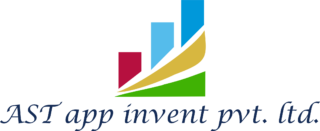Mobile Application Development

If you’re creating content for a website focused on application development, it’s important to provide value to your target audience, which could be developers, businesses looking for app development services, or individuals interested in learning more about the process. Here’s a structured approach to developing engaging and informative content for such a website:
Application development, or app development, is the process of planning, designing, creating, testing, and deploying an application to perform various business operations. It can be done by massive organizations with large teams working on projects or by a single freelance developer. Application development defines the process of how the application is made and generally follows a standard methodology.



The different types of applications that can be developed are,
1. Rapid application development
Rapid Application Development (RAD) is a more flexible method of app development that focuses on speeding up the development process without compromising quality. In this approach, developers can accelerate their feedback, make multiple iterations, and roll out updates without starting from scratch every time. This helps in achieving a more quality-focused output that also meets the demands of end-user requirements. Keeping speed and agility as precedence, RAD enables developers to deliver project outcomes in a matter of weeks or even days.
2. Custom application development
Custom app development is a tailored method of designing and deploying applications for specific users to fulfill business requirements. This method has a narrow focus and is opted for by organizations looking to address a particular need or objective. This approach offers functionalities that an off-the-shelf solution doesn’t and allows developers to create and deploy apps by precisely replicating the idea conceived.
Custom apps are mostly built by in-house developers who know the requirements in and out or outsourced to a third party.
3. Database application development
A database application is developed with the primary focus of entering, centrally storing, and retrieving information. Managing data accumulated from multiple sources becomes time-consuming and tedious as businesses expand.
With database applications, users can define custom roles, relate data from diverse systems, launch business-specific workflows, and allow user-based authorizations.
4. Enterprise application development
Enterprise application development is a collaborative method of building customized applications for large enterprises to meet their complex business needs. This approach helps automate specific functionalities and processes, allowing users to perform their tasks quickly.
These enterprise low-code applications are created by analyzing and incorporating the end user’s needs, enabling businesses to scale and perform their operations hassle-free.
5. Web application development
Web apps are websites that function like mobile apps. Users don’t need to download a separate app, just a web browser. Among the types of apps, web apps are the cheapest and easiest to develop. Yet, a web application developed from scratch can cost $50,000–$250,000, according to ScienceSoft.The downside is that they are also the worst in UX, as they tend to be slower, have less intuitive UI design, and interact less with other device features. Web apps are not featured in app stores, so there’s low market visibility. However, creating a web application is easy.
However, any web browser can still access web apps, making them accessible even on device browser functionality, such as smart TVs.
6. Citizen application development
Citizen app development is the process of creating applications by non-professional developers, often referred to as “citizen developers.” These developers typically have little or no coding knowledge but are interested in creating their own applications.
Citizen development has become increasingly popular in recent years, as low-code and no-code development tools have made it easier for non-technical individuals to create simple applications. These tools allow citizen developers to build applications by dragging and dropping pre-built components rather than writing code from scratch.
The following are some examples of applications for businesses that can be created by application development platform.
- Marketing apps
- Inventory management apps
- Collaboration apps
- Project management apps
- HRMS apps
- Expense tracking apps
Marketing apps: These apps help businesses improve their marketing efforts, such as social media management, email marketing, and content creation, allowing them to reach a wider audience and engage with customers more effectively.
Inventory management apps: These apps help businesses manage their inventory levels and track product availability, allowing them to reduce waste, optimize their supply chain, and improve their bottom line.
Collaboration apps: These apps help teams work together more effectively, allowing them to communicate, share files, and collaborate on projects in real-time.
Project management apps: These apps help businesses manage and track their projects, including assigning tasks, setting deadlines, and monitoring progress.
Human Resource Management System apps: HRMS apps can be designed to automate and streamline various HR processes, including recruitment, onboarding, payroll, performance management, and employee engagement.
Expense tracking apps: These apps can help businesses track and manage expenses by allowing employees to capture and categorize expenses and enabling managers to approve and reimburse expenses.


